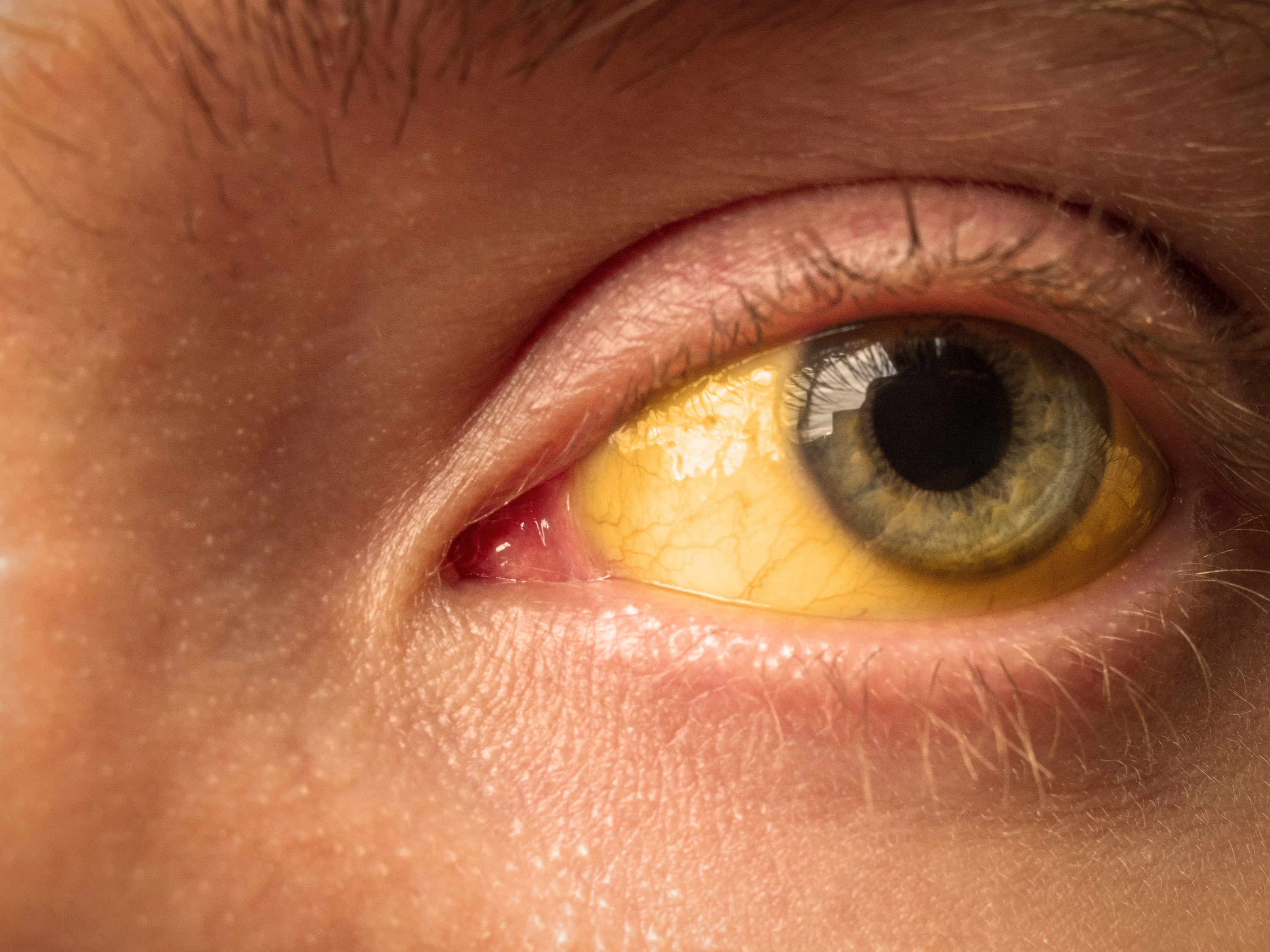Updated on September 24, 2024
Why Are the Whites of My Eyes Yellow?


Vision Center is funded by our readers. We may earn commissions if you purchase something via one of our links.
What are Yellow Eyes?
Yellow eyes are usually a sign of jaundice, which is a symptom of an underlying medical condition.
The white of the eye (sclera) may turn yellow when your body has high levels of bilirubin, a yellow chemical that results from the breakdown of red blood cells.
Normally, your liver filters bilirubin and uses it to form bile. Then, your body releases it through your digestive system as waste.
If your body can’t flush it from your system fast enough, bilirubin builds up in your tissues. This can cause your skin and eyes to turn a yellow color.
Yellow eyes—and yellow skin—are signs that you should see your doctor immediately. They'll diagnose the underlying cause of jaundice and determine the best treatment.
When to See a Doctor for Yellow Eyes
You should immediately see your doctor if you find your eyes are yellow. While some conditions causing jaundice are not a big deal, others are life-threatening.
Symptoms that may occur with yellow eyes include:
- Pale stools
- Dark urine
- Itchy skin
- Changes in skin color
- Nose bleeds
- Appetite loss
- Exhaustion
- Nausea and vomiting
- Abdominal swelling
- Leg swelling
- Fever
- Abnormal joint or muscle pain
What Causes Yellow Eyes?
People aren’t born with yellow eyes. Instead, various conditions can cause them, some of which can be serious. Possible causes of jaundice include:
1. Hepatitis
Hepatitis occurs when your liver gets inflamed. This is usually caused by a viral liver infection (hepatitis A, B, or C). Less common causes include drug use and autoimmune diseases.
Hepatitis can be acute or chronic:
- Acute hepatitis. The infection is short-lived.
- Chronic hepatitis. Lasts six months or longer.
When you have hepatitis, your liver can’t filter bilirubin as it should. This may lead to jaundice.
2. Blood Disorders
Bilirubin is a byproduct of your red blood cells breaking down. Because of this, conditions that affect the production or lifespan of your red blood cells can cause jaundice.
Examples include:
- Sickle cell anemia
- Malaria-induced anemia
- Drug-induced hemolytic anemia
- A reaction to a blood transfusion (rare but a medical emergency)
3. Blocked Bile Ducts
Bile ducts carry bile from your liver to your gallbladder, where it’s stored. When bile ducts get blocked, a buildup of bilirubin can occur.
Bile duct blockage can be due to:
- Gallstones
- Cholecystitis (gallbladder inflammation)
- Gallbladder cancer
- Pancreatic tumors
4. Alcohol Use Disorder
Excessive alcohol consumption over a long period can cause serious liver damage.
This may include:
- Liver inflammation
- Cirrhosis (liver scarring)
- Alcoholic hepatitis
Over time, the liver fails to function properly. Severe liver disease can be life-threatening.
5. Certain Medications
Some medications have been linked to jaundice. These include:
- Penicillin
- Oral contraceptives
- Steroids
- Acetaminophen
- Chlorpromazine
6. Pancreatitis
The pancreas is a small organ that produces enzymes and hormones. It’s located near the gallbladder, and ducts from the two organs join together to drain into the small intestine.
Inflammation of the pancreas (pancreatitis) can prevent bile from draining properly, which can cause jaundice. Pancreatic cancer can also block the bile duct.
7. Newborn Jaundice
Neonatal jaundice, also called newborn jaundice, occurs in up to 84% of newborns.3 It usually develops in the first week of an infant’s life, causing yellow eyes and skin.
Newborn jaundice is the leading cause of hospital readmission after birth.3 Infants produce higher bilirubin levels than adults, and sometimes their bodies don’t flush it out fast enough.
What Do Yellow Eyes Look Like?
Here are some photos of what yellow eyes might look like:


Can Yellow Eyes Be Normal?
No. Yellow eyes are a sign something is wrong. Some of the conditions that cause yellow eyes are quite serious.
How are Yellow Eyes Treated?
Jaundice is usually temporary. Once the underlying condition is addressed, it goes away. Treatment depends on the underlying condition.
Sometimes, fixing it could be as simple as avoiding alcohol or changing your diet. Other causes, such as gallstones, may require medication or simple surgery.
Consult your doctor to learn what treatment options are best for you.
Outlook
Most conditions that cause yellow eyes go away with treatment. Some conditions, such as cancerous tumors and severe liver cirrhosis, are life-threatening.
Summary
Yellow eyes are signs of jaundice, which is caused by high bilirubin levels. Jaundice is a symptom of an underlying problem that needs medical attention.
Many conditions can cause jaundice, including liver damage or inflammation. Not all causes of yellow eyes are serious, but some can be life-threatening.
Call your doctor if the whites of your eyes take on a yellow pigment.
In this article
6 sources cited
Updated on September 24, 2024
Updated on September 24, 2024
About Our Contributors
Vincent Ayaga is a medical researcher and seasoned content writer with a bachelor's degree in Medical Microbiology. Specializing in disease investigation, prevention, and control, Vincent is dedicated to raising awareness about visual problems and the latest evidence-based solutions in ophthalmology. He strongly believes in the transformative power of ophthalmic education through research to inform and educate those seeking knowledge in eye health.
Dr. Melody Huang is an optometrist and freelance health writer with a passion for educating people about eye health. With her unique blend of clinical expertise and writing skills, Dr. Huang seeks to guide individuals towards healthier and happier lives. Her interests extend to Eastern medicine and integrative healthcare approaches. Outside of work, she enjoys exploring new skincare products, experimenting with food recipes, and spending time with her adopted cats.

